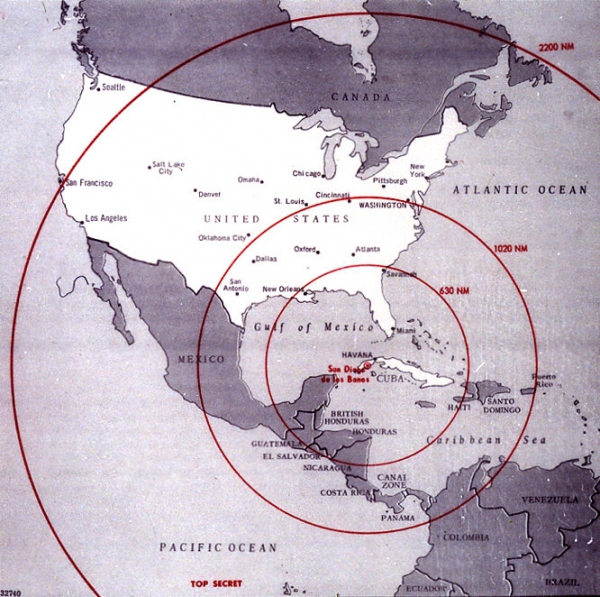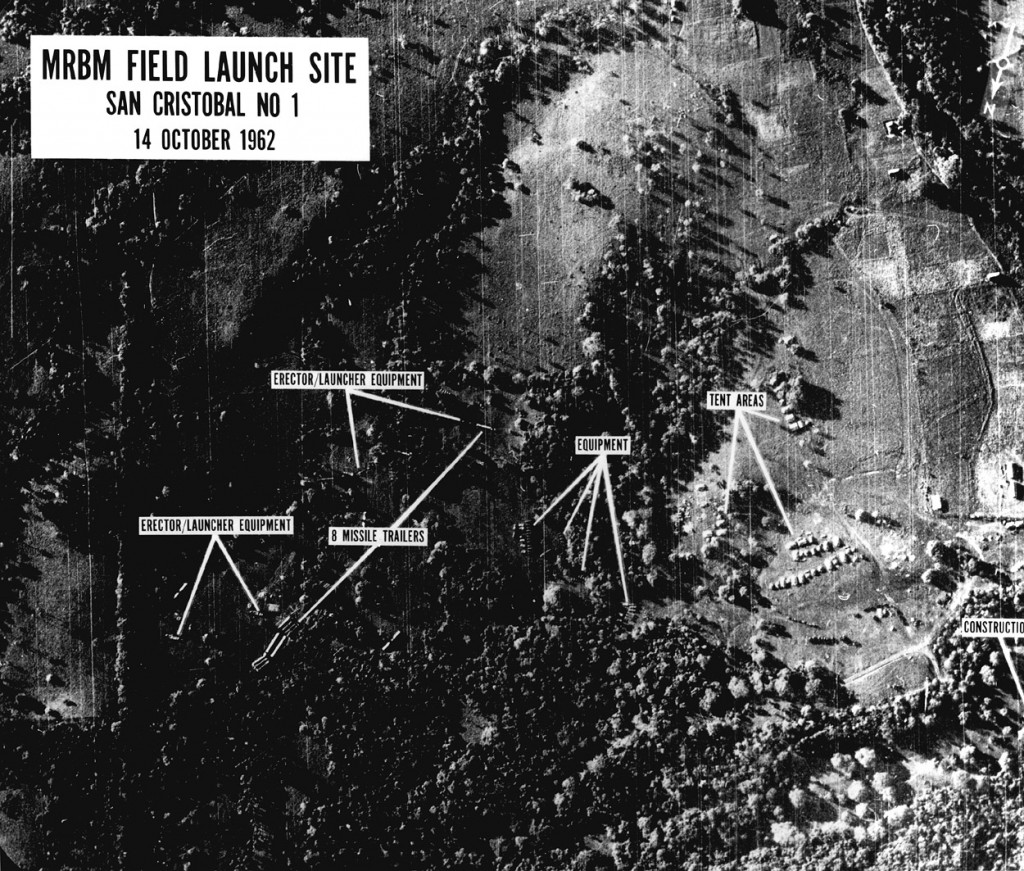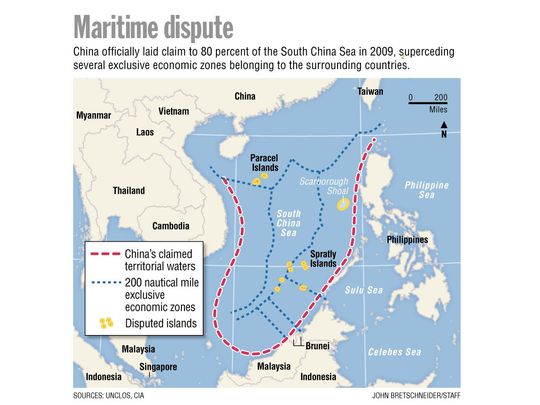A Cuban Missile Crisis Event Is Brewing In the South China Sea


This Cuban Missile Crisis Map from the 1960’s showed the range of Soviet missiles in Cuba. Today, all of North America is in range of Russian missiles based in Cuba.
As Mark Twain once said “History may not repeat, but it sure does rhyme”. And what is going on in the South China Sea rhymes with happened in America, in the 1960’s.
The Cuban Missile Crisis

Soviet nuclear missiles located inside of Cuba
During the Cuban Missile Crisis, surveillance photographs demonstrated that the Russians were embedding nuclear weapons into Cuba, thus reducing American response time from 27 minutes to 3 minutes.
President Kennedy responded by blockading Cuba and Russia backed down and World War III was averted.
Presently, in the South China Sea, China is preparing to limit access to the South China Sea and use their military to achieve this aim.
China’s actions clearly threaten the viability of the Trans Pacific Partnership and the present form of the American government. In fact warmonger, Senator John McCain, is calling for more US troops to be sent to the South China Sea which will clearly push the present situation to a crisis point.
Adding fuel to McCain’s fire, comes from Secretary of State John Kerry as he stated:
China said last month that frequent US Navy patrols in the South China Sea were forcing Beijing to boost its defense capabilities in the area. This month, Kerry warned China to not increase their surveillance and air capabilities in the South China Sea.
The irresistible force meets the immovable object.
The New and Emboldened China
China’s economy, no matter how many times they try to restructure is failing. The Chinese government faces disenfranchised opposition from extremely poor peasants living in the outlying provinces. To add salt to these wounds, the Chinese have been left out of a monumental trade agreement, the Trans-Pacific Partnership (TPP). Subsequently, Chinese foreign policy is guided by these two principles:
- Disrupt the TPP so no nation gains an economic advantage over China. It is an agreement that China derives no value.
- Isolate Taiwan geographically and militarily. Closing down the South China Sea moves China in the direction of accomplishing this kind of action. The short-term goal is to economically diminish Taiwan. The final goal is the take-over of Taiwan.
China is increasingly aggressive, almost to the point of forming a quasi-naval blockade in and around the disputed territories which are a point of disagreement between China, her neighbors and the United States. In fact, China’s actions within the last few days are clearly indicative of a nation determined to defend its claims.
It is critical to keep in mind that every dispute in the region, for China, begins and ends with Taiwan and Taiwan lies just north of the disputed area. These unfolding events in the South China Sea is also about the unfolding of the new Chinese hegemony, or, the establishment of the most recent flavor of the New World Order.
The Surface Nature of the Dispute
China’s rapidly growing perimeter which will protect Chinese invasion forces when they attack Taiwan.
Vietnam, Malaysia and most of all, the Philippines are impacted by aggressive Chinese action in the region in which the Chinese are constructing militarized islands which are serving as an impediment to free trade. The areas of Malaysia, Indonesia, and Vietnam could provide the Chinese war machine with virtually unlimited supplies of oil, rubber and other raw materials needed to maintain a sustainable Chinese war effort if China is able to dominate the region.
In a very disturbing development, China stated on Saturday “that it will ignore the decision of an international arbitration panel in the Philippines’ lawsuit against Beijing’s sweeping territorial claims in the South China Sea”. This is clearly China’s line-in-the-sand comment.
Conclusion
Certainly, all the elements for a monumental confrontation are in play and the events are surely reminiscent of the Cuban Missile Crisis.
As they continue to militarize the South China Sea, the Chinese give no indication that they are going to back down.


No comments:
Post a Comment